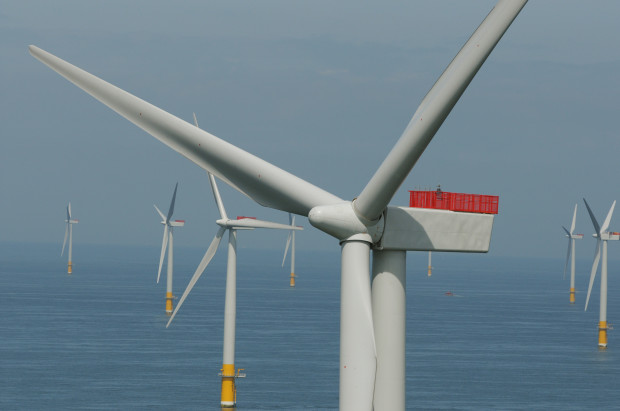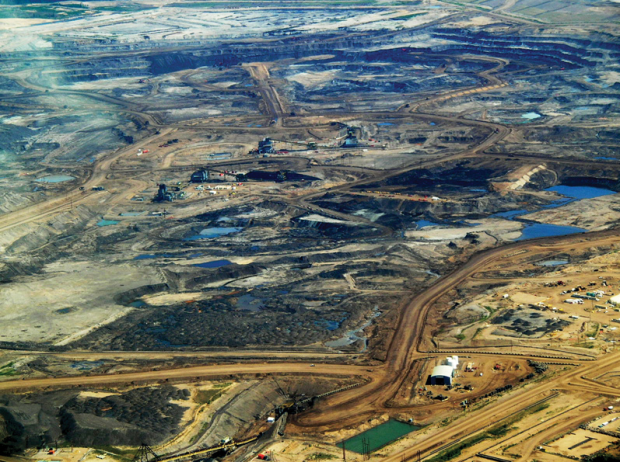A landmark achievement has occurred in efforts to move climate solutions for wildlife forward. After years of fits and starts, China and the U.S. – the two countries that account for about 40 percent of the world’s carbon emissions – agreed to an historic effort to curb carbon pollution. This marks a major development and signals the growing momentum towards breakthrough progress on stopping runaway climate change, which could cause massive extinctions and habitat loss.
In the agreement, the U.S. promised carbon reductions of 26-28% by 2025 – which would require aggressive but achievable reductions in addition to the President’s standing commitment of a 17% reduction by 2020. For China, which has soaring emissions, it agrees to stop growth in emissions by 2030 and commits to having 20% of their energy come from non-fossil fuel based energy.
This development has serious implications for both domestic and international efforts to cut carbon emissions and protect wildlife. Inaction by the U.S. and China has thwarted international actions to reduce carbon pollution. With an international summit in Paris set to discuss this issue next year, this agreement clears the way for real progress on an international accord to tackle greenhouse gas emissions.
At home, this will spur the drive to transition to cleaner, renewable sources of energy. Here are just a few examples.

Clean Power Plan
President Obama has already taken an historic step, the EPA’s Clean Power Plan, to cut carbon emissions from power plants, the largest source of emissions in the U.S. While the effort to cut emissions is unprecedented, the current carbon reduction goal of 30% by 2030 leaves significant achievable reductions on the shelf.
This target almost certainly needs to and can be tightened to meet the promise made in the agreement with China. Primarily, major gains in renewable energy and energy efficiency could result in further reductions, as much as 40% or more by 2030.
This is not only possible, but would bring a host of environmental and economic benefits. Solar and wind are by far the fastest growing power sectors in America. Many states are already on pace to surpass the levels of reductions estimated for them in the current draft Clean Power Plan. This agreement will make it all the more important that EPA issue a final rule that realizes the full potential of achievable reductions from transitioning to renewable energy and reducing demand through efficiency measures.
China’s commitment in this agreement to get 20% of their power from non-fossil fuel sources demonstrates the accelerating pace of renewable development. Germany is actually well ahead of this, on pace to have 60% of its energy from renewables by sometime in the next decade. In addition to providing clean energy for wildlife, renewable energy also presents are major economic opportunity to provide home grown jobs.
We need to be at the forefront of the renewable revolution that is already in motion.

Offshore Wind
China, like Europe, has also begun to tap the massive offshore wind resources available to provide coastal and other population centers clean, wildlife friendly energy.
The U.S. does not have one turbine spinning off its shores, despite the fact that there is an estimated energy potential off the Atlantic coast that is 4 times the whole U.S. demand. It’s time to tap into that, and this agreement should help continue the push to do that.
Projects off the New England coast are set for construction as soon as next year. We need to get responsible offshore wind developed at a scale and on timeline that allows major urban centers to break reliance on fossil fuels and bypass long-term reliance on supposed “bridge” fossil fuels like fracked gas.
Dirty Fuels
The President has already promised to reject the Keystone XL pipeline if it “exacerbates” the problem of climate change. With tar sands fuel at least 17% more carbon intensive on a life-cycle basis than regular oil, it clearly does.
The President has made remarkable progress reducing carbon emissions from cars and trucks, but building carbon intensive tar sand pipelines while try to cut carbon is like starting your diet by doubling up on dessert.

The President has reiterated his promise to measure KXL against the facts and await an appeal of a decision in Nebraska regarding the rights of landowners, who don’t want the risks of dirty tar sands oil, before deciding on the pipeline.
Unfortunately, this issue is getting mired in partisan politics. But the facts are clear. Less risky, lower carbon sources need to power our transportation sector to give wildlife a chance. Long-term tar sands infrastructure will doom wildlife and make carbon reduction commitments impossible to achieve.
Methane
Methane is a potent green-gas that is at least 20 times as powerful as carbon dioxide. Methane currently accounts for 9% of U.S. greenhouse gas emissions. Much of this methane pollution comes from oil and gas operations where the methane leaks or is purposely vented in the air.
This pollution is literally a resource wasted. Fortunately, methane can be captured in a low-cost and technically achievable that pays back over time. Pursuant to an Administration strategy to reduce methane pollution, the Department of Interior’s Bureau of Land Management and EPA are both in various stages of considering rulemaking to stop methane pollution.
Strong action to curb methane pollution is an easy, low-cost, win-win and necessary way to achieve carbon pollution reductions and help meet the new 2025 carbon emissions goal.
In response to the landmark U.S.-China agreement, National Wildlife Federation CEO Collin O’Mara stated that:
This agreement is a significant step forward for America’s wildlife. No individual nation can confront climate change alone and today, the world’s two largest carbon polluters are committing to solve this problem together.
We must continue to help our wildlife and communities cope with the climate impacts that we’re already seeing, but adaptation alone simply dooms future generations to shrinking habitats, more extreme storms, and greater sea level rise. We must lead the world in cutting industrial carbon pollution and today’s agreement is important progress.
It is clear that the arc of progress and history is now on the side of wildlife and clean energy. The U.S-China agreement promises to bring us a major step closer to achieving needed carbon pollution reductions in time ro protect wildlife. It is also a strong signal that President Obama has made climate a legacy issue and is determined to be on the right side of history.
 Speak up for wildlife: tell the Environmental Protection Agency that you support the ground-breaking limits on carbon pollution from existing power plants!
Speak up for wildlife: tell the Environmental Protection Agency that you support the ground-breaking limits on carbon pollution from existing power plants!
 Offshore Wind Energy
Offshore Wind Energy 

